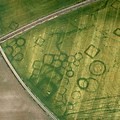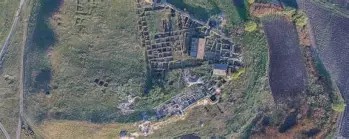LiDAR translates into terrain maps for archaeological fieldwork. The image shows the full process: laser pulses emitted from a drone, interacting with trees and terrain and generating a Digital Elevation Model (DEM) that reveals subtle features like mounds, ditches and ancient roads. Bridging with the ceremonial theme it can be described as:
- Sky-Mapping 'Memory': The drone hovers like a witness above the land, translating light into layered understanding of the terrain.
- Laser of 'Listening': Vertical shafts of red light reach downward, not to pierce but to perceive.
- Terrain 'Whisperer': The elevation model at the base echoes the contours of buried stories, mounds, ditches, forgotten and paths.




